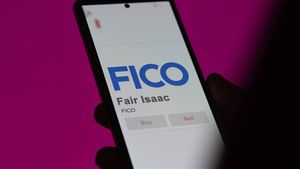By Juergen Mueller | Chief Technology Officer and Member of the Executive Board of SAP SE
SOURCE: SAP
DESCRIPTION:
When the Science Based Targets initiative (SBTi) was launched in 2015, the goal was to recruit 100 companies. Now, almost 2,900 are on track to reach the targets set by SBTi for how much and how quickly they need to reduce their greenhouse gas (GHG) emissions to prevent the worst effects of climate change.
The Race Is On
I have witnessed how sustainability is top of mind not only in business engagements but also in my personal life. Recently, for example, my niece turned four. So, I wonder, what world will she see in 2050? We talk about similar questions in customer meetings: What will the world look like for future generations? I usually emphasize how critical it is for everyone – citizens, businesses, and governments alike – to invest in sustainability to create long-term value.
Due to increasing awareness over the past decade about the perils of climate change, the imperative to set commitments has left its mark on all sectors and geographies. At this point, the question is not whether major companies will commit to net-zero emissions, but how they plan to achieve this target.
There are many reasons to reduce greenhouse gas emissions aside from protecting the planet. It benefits the bottom line because efficient practices reduce operating costs and help increase employee productivity. In addition, companies must respond to pressure from consumers to act more responsibly, they must adhere to new regulations, and environmental, social, and governance (ESG) criteria are of increasing interest to companies, their investors, and other stakeholders.
Despite all the best intentions and commitments, significant challenges stand in the way, including the scale of economic transformation that a net-zero transition entails as well as the difficulty of balancing the short-term risks of poorly prepared or uncoordinated action with the longer-term risks of insufficient or delayed action.
A detailed analysis by McKinsey notes that the path to achieving net-zero will require a universal transformation of the global economy throughout all energy and land-use systems, with significant capital allocations, costs, and shift in jobs. And while universal, the economic exposure to the transition will not be uniform across sectors, geographies, and communities. Different industries will transform at a different pace.
The risks are considerable. Geopolitical disruptions such as the COVID-19 pandemic and the war in the Ukraine can create setbacks that might even accelerate climate change. But the opportunities for countries, sectors, and companies could be considerable. Nations that have abundant natural capital such as more hours of sunshine, or that invest in technological, human, and physical capital, will be well positioned to prosper in the net-zero economy.
Dealing with the Scope 3 Challenge
Achieving net-zero begins with reducing greenhouse gas emissions in the three categories, or Scopes, defined by Greenhouse Gas Protocol, the international accounting tool. Scope 1 covers direct emissions from owned or controlled sources. Scope 2 covers indirect emissions from the generation of purchased electricity, steam, heating, and cooling consumed by the reporting company. Scope 3 includes all other indirect emissions that occur in a company’s value chain, which can range from business travel to waste disposal to third-party goods and services, making it by far the most difficult area to monitor and control.
According to the SBTi, Navigant, and the Gold Standard, there are several ways companies can address their Scope 3 challenges.
Scope 3 emission reduction starts by integrating circular economy principles in product and service design. Products can be designed to have longer lifespans and to be more efficient, so that life-cycle emissions intensity is lower. Circular systems incorporate more product service models, such as selling a car sharing package instead of just a car, and they lead to greater supply chain efficiency as more products are reused, recycled, or refurbished.
Engaging with suppliers to reduce their emissions — ideally in line with climate science — is another effective way to reduce Scope 3 emissions. After identifying key suppliers, companies can set objectives, maintain close collaboration, monitor progress regularly, and create incentives for action. For example, procurement choices can favor suppliers with lower carbon footprints.
At SAP, we facilitate this by connecting businesses on trusted networks to share information and accelerate sustainable commerce for impact. SAP runs SAP Business Network, one of the world’s largest supply chain collaboration networks, committed to scale social procurement on SAP Ariba software. We are also helping lead industry cloud sharing transformations like Catena-X for the automotive industry and tackling Scope 3 emissions accounting through the WBCSD Pathfinder Initiative.
Leveraging customer awareness and desire for more sustainable products is another way to drive lower emissions. Companies can engage customers either directly through education, collaboration, or compensation, or indirectly through company regulation or customer motivation via marketing and choice architecture. Many utilities companies, for example, are engaging with their consumers to educate them on the importance of energy reduction or giving consumers rebates for installing energy-efficient heating and cooling equipment.
Finally, operational policies can lead to large reductions in Scope 2 and Scope 3 emissions. These steps include moving away from fossil fuels to accelerate the transition to a low-carbon economy and investing in low-carbon projects and resilient development. As lawmakers around the world are introducing caps on carbon emissions, performance standards, carbon pricing and taxation, companies are responding through compliance and by setting their own targets, often in alignment with the United Nations Sustainable Development Goals (UN SDGs). These include Clean Water and Sanitation, Affordable and Clean Energy, Industry Innovation, and Responsible Consumption and Production. SAP has accelerated its commitment to achieving net-zero along its value change 20 years earlier than originally targeted.
The Power of Technology
SAP technology helps companies manage and lower global emissions, and to track and reduce their carbon footprint across their supply chains and operations. Our customers can connect data and business processes while embedding sustainability metrics into all business functions, including carbon accounting. Customers get real-time visibility into the enterprise, facilitating better insights while establishing a primary source of emission data for overall corporate sustainability reporting and carbon credit accounting.
SAP Business Technology Platform is the technological foundation for an intelligent and sustainable enterprise. It helps to integrate and extend applications across business networks and enables visibility of disaggregated data for compliance – ESG reporting, holistic steering, and supply chain transparency.
Among our specific product offerings designed to help companies in achieving net-zero, SAP Product Footprint Management lets companies calculate carbon footprints for their products across the value chain. It not only equips companies with the necessary insight, but can enable data exchange with customers, suppliers, and business partners — driving transparency across a company’s Scope 1, Scope 2, and Scope 3 emissions.
Science-based target setting makes business sense: it future-proofs growth, saves money, provides resilience against regulation, boosts investor confidence, and spurs innovation and competitiveness. It also demonstrates concrete sustainability commitments to increasingly conscious consumers. With the right guidance, tools and solutions, any company, regardless of size or industry, can make — and keep — their sustainability commitments.
KEYWORDS: SAP, NYSE: SAP, Science Based Targets Initiative (SBTI)
![]()







